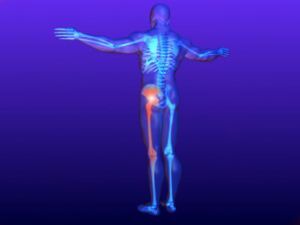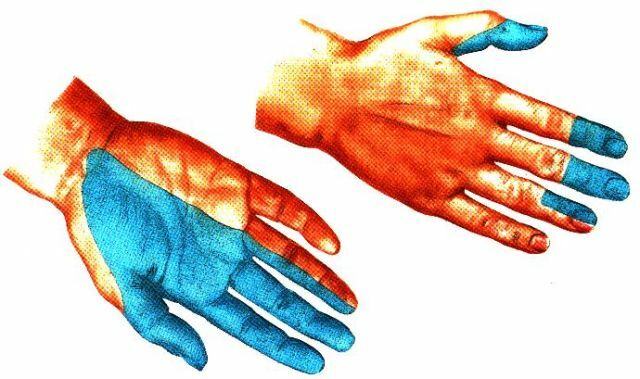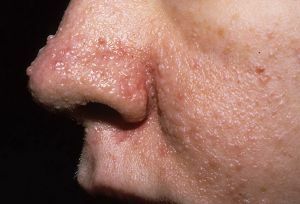 Tuberculosis sclerosis is a hereditary pathology that is referred to as phacomatosis.
Tuberculosis sclerosis is a hereditary pathology that is referred to as phacomatosis.
The disease occurs at a frequency of 1:50 000, as a result of pathology, the growth and differentiation of germ-cell cells is disrupted.
Also to the group of tubercular sclerosis can be attributed illness Recklinghausen and many other hereditary diseases.
Characteristic signs of phakomatosis are:
- child or young age;
- heredity;
- polysystemic lesion;
- high risk of formation of head tumors and spinal cord, and in some cases internal organs suffer;
- decreased intelligence;
- significantly reduces the life expectancy of a person.
Contents
- History of discovery
- Diagnosis based on symptoms
- Manifestations in children
- To treat or not?
- Surgery
- Complications of the disease
- Prevention at the family planning level
History of the discovery of
For the first time such a disease was discovered in 1880, the French doctor Burneville. He himself noticed a pathological change in the brain, and he himself gave the name of tubular sclerosis of cerebral fibers.
The disease was detected in a 15-year-old girl who had epilepsy and had severe skin manifestations, and significantly reduced intelligence.
Ten years later, dermatologist Pringle began to describe the agiofibroma of a person who has a disease of tuberculous sclerosis, and it was here that the term congenital adenoma of the sebaceous glands found application.
Then another doctor described the symptoms of tuberculous sclerosis, with his convulsions, mental retardation.
Diagnosis based on symptoms of
When diagnosing this disease, it may be difficult to have a pronounced clinical polymorphism.
Patients with tubercular sclerosis must be under the supervision of all specialists, because they can correctly form medical measures.
Pathology is also called Burneville-Pringle disease, which affects the internal organs, bones, eyes, skin and nervous system.
All changes that occur in the disease have a hamartomatous proliferation. If the changes occurred in the brain, it is more noticeable in the development of this disease.
If such a disease has been identified, then all patients who have any form of tuberculous sclerosis should be observed by the doctors, as well as immediately check the relatives of the first degree.
And after that, the observation will occur throughout the life of the patient.
It is these measures that will help to correctly and at the same time conduct medical genetic studies in families where the disease was detected.
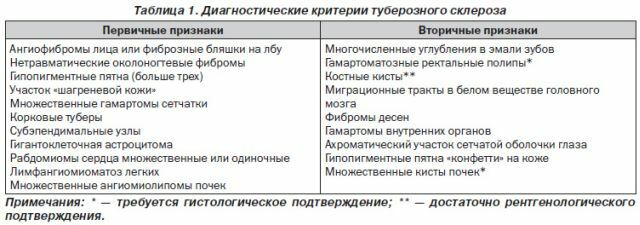
Now all the studies carried out have significantly expanded the concepts of diagnostic criteria for TB sclerosis. And as studies have shown all the previously known triad of tuberculous sclerosis( adenoma of the sebaceous glands, backwardness in development and epilepsy) occurs in almost 25% of patients in the entire population.
And if the patient has a mild form of the disease, it can be difficult to diagnose.
In the first place in the disease there are tumor nodes, and immediately in several organs, and this is what makes it possible to determine what is tuberculous sclerosis.
Then begins underdevelopment in some parts of the cerebral cortex, this manifests itself in the form of a dystopia of the cell layers and nerve cells.
 Hysterical neurosis is a complex disorder of the psyche. What are the features of the disorder you can learn from our article.
Hysterical neurosis is a complex disorder of the psyche. What are the features of the disorder you can learn from our article. The inability to carry out coordinated movements of Babinsky's asynergy is manifested in consequence of the development of cerebellar diseases. Symptomatic treatment is the only thing that a patient can help.
Manifestations in children
In children, TB sclerosis can be met up to 11 years, and it can be seen from the age of three.
They have areas of coarse skin, which people call "shagreen skin", represents a pronounced cluster of gammarthrom, and then merges into one large spot.
First the spots will have a pinkish surface, then turn brown or yellow, and in appearance such a spot can be compared to an orange peel.
Most often, spots appear in the lumbar region. Dimensions of such a stain can range from 1mm to 10cm. But such symptoms can be observed in children after 10 years. 
In others, it manifests itself in the form of fibrous plaques, beige in color, and can appear in a child before the first year of life. And these plaques are the first signs of tuberculous sclerosis in children.
There are such specific tumors that are small in size and look like goosebumps, most often they are found between the fingers.
To treat or not?
To date, TB is almost impossible to cure, all that can be done for such people is symptomatic treatment. And also for a positive result argon laser is used.
It is impossible to cure the disease completely, but at least it is necessary to help the patient to live full life, for this there are two ways of medicamentous and surgical treatment.
Most often these methods are used in a complex. The medication will help to prevent the epileptic seizures. For this purpose appoint corticosteroids.
In the surgical method, removal of intracranial tumors is carried out, which rapidly grow and induce increased intracranial pressure.
Now they have not yet developed a medicine for pathology, and anticonvulsants are used as an anticonvulsant therapy.
Surgery
Remove the tubercles in the brain that cause convulsive seizures. After the treatment, the number of seizures and their severity immediately decreases:
- removal of tubercles that block outflow of blood and metabolism in the brain;
- coagulate, - cauterization with a special apparatus;
- if there are tubercles or formations on the skin, they are removed by laser or electrocoagulation.
Complications of the
illness Complications are manifested:
- in the form of an epileptic fit, it can be delayed, and after that a person may not regain consciousness at all, or regain consciousness, but only for a short time, and then the convulsions will repeat;
- in the form of hydrocephalus, it will develop when the outflow of liquor from the skull is blocked;
- renal failure;
- in some cases, eyesight is lost.
Prevention at the Family Planning Level
Now it's worth talking about preventive measures for TB.
Because the disease is genetic, which develops with a spontaneous genetic mutation, and there are no preventive measures here.
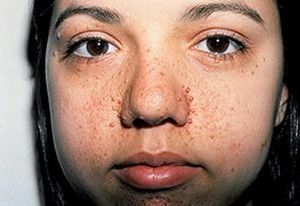 MRI and CT should be taken as preventive maintenance at least once a year. Also for children, a ketogenic diet is most often prescribed, where a high fat content, low carbohydrates, such a diet will lead to a decrease in glucose level.
MRI and CT should be taken as preventive maintenance at least once a year. Also for children, a ketogenic diet is most often prescribed, where a high fat content, low carbohydrates, such a diet will lead to a decrease in glucose level.
And here you can see the frequency of seizures. But to whom this diet is not suitable and therefore it is better to trust the surgeon.
If there are lesions of tuberculous sclerosis, they should be surgically removed. Life expectancy with such a disease is not too great, children die at an early age, adults also have a low life expectancy.


